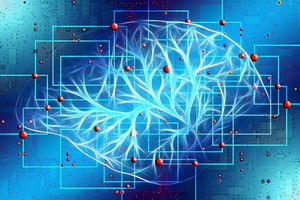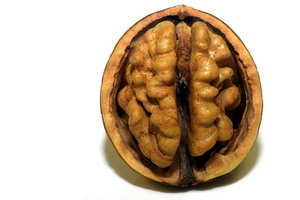
As anyone who survived the psychological wave of the ’80s and ’90s knows, “To heal it you have to feel it.” I have found that this aphorism to be very true but generally misunderstood. Considering some of the “breakthrough techniques” introduced back in those days, the confusion is quite understandable. On the surface, the idea of feeling it stands as an opposition to the fundamental suppression of feelings in favor of rational thinking so deeply ingrained in the souls of our forefathers. The European Age of Enlightenment in the 17th and 18th centuries taught us to reason our way through life being ever vigilant to eradicate any traces of emotionality. Unfortunately back then feelings and emotions were considered the same. They aren’t.

Emotions are triggered reactive states, generally of fear or anger, based on memories of previous experiences. They are replays of our past. Feelings are present time physical sensations and cognitive processing of the enormous amounts of data streaming into our brain at each and every second from our body and perceived through our senses from our environment. This distinction is critical to understand if you are to “feel it to heal it”. This distinction is rarely understood even today by therapists and others in the helping fields. Most people default to experiencing their emotions and think they are feeling. They aren’t. But this default is easily achieved, as emotions are noisy and readily apparent while feelings are subtle and complex and require serious focus and a type of work to gain insight from. Most people shy away from anything smelling of work in the healing world. They falsely believe that healing should magically happen to them without their work or participation. That’s okay, they just don’t get to heal is all.

So what does it mean to “feel” something? Life presents you with a situation to experience. You take in this experience through your senses. They bombard your brain with a boatload of informative data, of which you are only able to be conscious of less than 1% of that data. The other 99% is processed in various areas of the brain we don’t normally have conscious awareness of. Generally, the 1% we do get is very heavily filtered by established beliefs about what is important to us. For instance, if we are very hungry, we will completely disregard all sorts of interesting input from life around us and only pay attention to anything that suggests we might be able to get some food. The amount of profoundly important information for our life that we miss is staggering because our attention is solely focused on getting what we believe will support our physical or emotional survival at the moment.

I find it fascinating that the most successful people in life all have the ability to set aside their immediate needs and wants to take in a bigger picture. This trait is called delayed gratification, and it is the most important character trait that all successful people have. If you want to be a success in life, this is the trait to cultivate. Understanding this brings us a step closer to understanding just what feeling is. It is not rampant emotionality or passion. Feelings might evoke passion or emotions, but they are not those things. Feelings are what is going on behind the facade and social mask we meet the world with.

The main playground of feelings is in our right brain – the global processing unit of our mind, and in the so-called mirror neurons of the brain. This area constantly compares sensory input to our memory for recognition. Typically, if recognition is found then historical reactions that worked for us are simply put into play. If novel input is registered then the left brain is alerted to evaluate for threat and response. The left brain is the action response side of the brain. This is where our ego lives because our ego is actually a threat response tool for social survival. It builds stories and interactive games to find a place in the social power hierarchy to survive. In time these stories consolidate into a set of self-beliefs and assumptions that become our persona. If you are going to a skilled therapist, this is where they are working – on your stories that have turned into self-beliefs and assumptions. This is where over 90% of our inner suffering actually comes from. We like to project it out and make the world responsible for our suffering, but that victim stance prevents you from proactively making a change in your life.

Okay, this is another piece of the “feeling it” process needed for change. Part of what you are feeling is your choice of stories and why you chose those particular stories. This is one place where the mirror neurons come into play. When we can see life from another person’s perspective, which is what the mirror neurons allow us to do, it allows us to see how other people with the same circumstances as us made different story choices and produced different values, priorities, self-beliefs, and resultant life actions. The secret gift of this feeling skill is to see that our story choices were not the only choices possible. It gives us the freedom to consider different choices for our life. Without being able to feel/see life through another person’s eyes, we would not believe that we had any other choices. We always make the best choices we can at the moment, but too often we get stuck to those choices simply because repeating old patterns is easier than creating new ones. Rigorously optimizing our personality by regularly eliminating limiting beliefs and building new skills to produce better relations with the world is simply not something most people do. Most people have to be forced by suffering to apply this effort.

Another “feel it” component is a fuller, closer look at the current input. Our energy-saving approach to dealing with such an overload of input data is to assume that something that seems similar to a historical experience is the same as that experience. For example, if the first time you met a dog it jumped on you and pushed you over, you, at that time, concluded that you should stay away from dogs. This may have happened when you were three years old and tiny. Now here you are 25 years old and big and you still have the same reaction to dogs. The dog may look and act the same, but you are not tiny and easily pushed over anymore. Your brain reacts with a habitual reaction based on years-old threat response actions that no longer apply. If you “feel it” in the here and now, it becomes obvious that the old beliefs about dogs based on your vulnerability at age three no longer apply to your grown-up self. You are not the same anymore. This is a super common error of reasoning – a fear reaction based on a time when you had no skills for dealing with the threat that you have since developed the skills for dealing with. We have to release these phobias frequently.

Our mirror neurons also give us the ability to appreciate how different other people are from us as well as how much the same they are in other areas. This becomes vital to “feel” when we get sucked into turning an observed fact in our world into a story and a belief. This belief now rings as a Truth for us, and when we fall into the Truth trap we become righteous and believe others are wrong for not seeing our Truth. Our facts may be real, but how we relate to them is totally personal, and the story we make up about the facts that become our belief and Truth is really just our story. It feels totally True because it is made from what is relevant to us. What we don’t get is that other people may not find any relevance in those facts for their life, so your story has no meaning for them. They may agree with your facts, but that does not make your Truth relevant to them. Truth is only personal. It never applies to other people. Fully feeling through your mirror neurons enables you to see this reality.

So “feeling it” is a complex process of reassessing a lot of input data on the feeling side of your brain from a new perspective. Being able to see your situation and relationship to what is from many other perspectives unhooks you from your automatic knee-jerk reactions and allows you to rewrite your self-belief stories. As you rewrite these stories that have defined your life relationship, you can write out the suffering that you have been experiencing. You feel it to heal it.
Take care,
David
